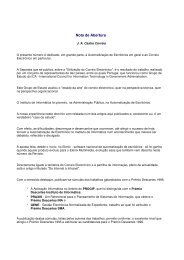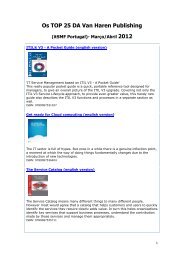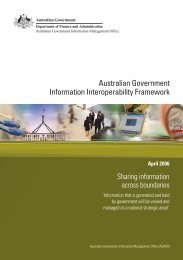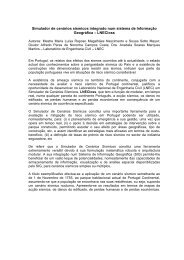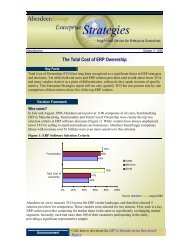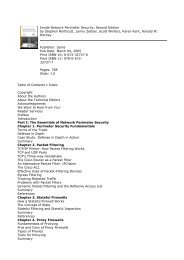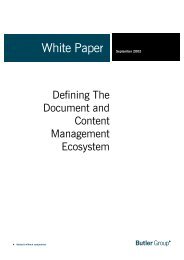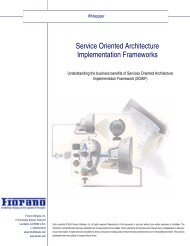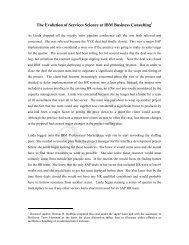OECD Peer Review of E-Government in Denmark - ePractice.eu
OECD Peer Review of E-Government in Denmark - ePractice.eu
OECD Peer Review of E-Government in Denmark - ePractice.eu
You also want an ePaper? Increase the reach of your titles
YUMPU automatically turns print PDFs into web optimized ePapers that Google loves.
II.<br />
THE CASE FOR E-GOVERNMENT<br />
<strong>Denmark</strong> is not pursu<strong>in</strong>g e-government as an end <strong>in</strong> itself. Rather, it is treated as an enabler <strong>of</strong><br />
wider government objectives. In addition to its role <strong>in</strong> advanc<strong>in</strong>g the Structural Reform, there are three<br />
major elements to the e-government policy environment: 1) government ICT policy; 2) the push for<br />
public sector modernisation; and 3) public sector efficiency. Together, these provide the essence <strong>of</strong> the<br />
“case” for e-government. Detailed coverage <strong>of</strong> policies, strategies and plans related to e-government is<br />
provided <strong>in</strong> Appendix 4.<br />
The <strong>OECD</strong>’s <strong>in</strong>terviews with Danish <strong>of</strong>ficials, review <strong>of</strong> relevant documentation, and survey <strong>of</strong><br />
government organisations show that the case for e-government is relatively clearly articulated <strong>in</strong> the<br />
design and implementation <strong>of</strong> <strong>Denmark</strong>’s e-government strategy. However, full understand<strong>in</strong>g <strong>of</strong> the<br />
relationship between e-government and other government policies and programmes has not yet<br />
permeated the public sector.<br />
E-government policy context<br />
The e-government programme does not stand alone, <strong>in</strong>stead be<strong>in</strong>g positioned as an enabler <strong>of</strong><br />
economic and other policy goals. In particular, it is l<strong>in</strong>ked to:<br />
• Public sector modernisation, which aims to create a more citizen-centric public sector<br />
provid<strong>in</strong>g better public services.<br />
• ICT policy, which aims to stimulate growth <strong>in</strong> Danish bus<strong>in</strong>ess and the ICT <strong>in</strong>dustry, develop<br />
Danes’ ability to participate <strong>in</strong> the “knowledge society” (particularly by <strong>of</strong>fer<strong>in</strong>g a wider<br />
range <strong>of</strong> relevant and useful public services via the Internet), and reform the public sector.<br />
• Improv<strong>in</strong>g public sector efficiency, which the <strong>Government</strong> has identified as a key factor <strong>in</strong><br />
ensur<strong>in</strong>g <strong>Denmark</strong>’s ongo<strong>in</strong>g competitiveness and ability to fund its welfare state.<br />
Public sector modernisation<br />
The <strong>Government</strong> has implemented a public sector modernisation programme called “Citizens at<br />
the Wheel”. Launched <strong>in</strong> May 2002, under the leadership <strong>of</strong> the M<strong>in</strong>istry <strong>of</strong> F<strong>in</strong>ance, the vision <strong>of</strong> the<br />
programme is to create a public sector that will:<br />
• Be based on the free choice <strong>of</strong> citizens.<br />
• Be open, simple and responsive.<br />
• Provide value for money.<br />
The programme identifies e-government as one <strong>of</strong> the key enablers <strong>of</strong> achiev<strong>in</strong>g the<br />
<strong>Government</strong>’s modernisation vision. The goal <strong>of</strong> the programme is to ensure that government is<br />
focused on the needs <strong>of</strong> citizens rather than those <strong>of</strong> government agencies, and that it provides public<br />
36



